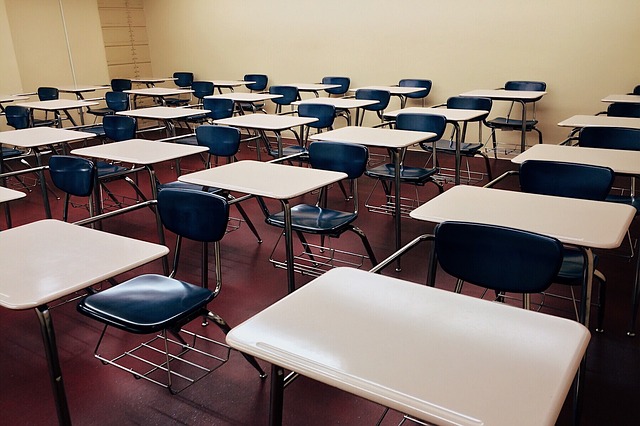clear
How can the traditional classroom enable students to learn successfully?
clear

source:
Wokandapix / pixabay
Use question and answer.
I’m not a teacher, but for various complex reasons I was invited to tell a class of 10-year-olds in an American school about Christmas in Cyprus, where I live for part of the year. I could have stood up and told them.
But I wanted them to make a connection between what they knew and Cyprus.
The school is in a rural area, 7,000 miles from Cyprus. It so happened that the school’s mascot is a cheetah. So I decided that I would travel with them from their school to Cyprus via Kenya. I asked them where cheetahs come from. We quickly got as far as “Africa.” So where is Africa? Not much response. So I’d already planned to use a Google map that started tightly zoomed in on their school, something they’d recognise. I zoomed out to show the state, zoomed out again to show the borders with Canada and Mexico and asked “Does the USA go on for ever?” “No.” “OK, so what are the countries to the north and south?” A few knew, good. “So – how many countries are there in the world?” No hands up. “Anyone want to guess?” Some guesses, wildly wrong. But the children were THINKING. I told them – and an hour later they had remembered. So I moved the map to show the Atlantic and asked “What is this ocean called?”
And so on and so on.
When we got to Cyprus I showed them a picture of Cypriot schoolchildren – another connection. I introduced them to the Greek language (spoken in Cyprus) by showing a picture of Harry Potter (at which many of the girls swooned!) Why Harry Potter? The first novel is “The Philosopher’s Stone”, and the word “philosopher” comes directly from two Greek words – “philo”, (friend, love) and “sophia” – wisdom. Another connection made.
The children’s teacher was delighted with the results. I had led the children to discover what I wanted them to know, or at least make connections on which I could build.
So from my one classroom experience I am convinced that leading students to new knowledge by question is far better than just giving it to them. And the more connections that can be made the more chance there is of at least one connection being retained.
An excellent article about this is here:
http://teachingcenter.wustl.edu/resources/teaching-methods/participation/asking-questions-to-improve-learning/
I have posted an answer to the question “Why educate in questions and answers?”. That answer describes my career experience in on-the-job training by question and answer.
 0
0
clear
This is an interesting question. There's a lot of conversations in education circles about what classrooms are doing wrong and how they are losing their relevance and effectiveness as a method of learning. However, despite all the technologically augmented methods of learning now available, I think the traditional classroom still offers a wealth of education opportunities to students. Firstly, it opens conversations. Not just an exchange of words mediated via technology but a nuanced, participative, face to face encounter with other people who are learning the same content. Perhaps one day this kind of experience will be achievable via technology but today I think the simple act of sitting in a room with other people and discussing what you are learning is irreplaceable. Secondly, a traditional classroom allows what I like to think of as "economies of scale" in teaching. A teacher can present an idea once and respond in real time to questions as they occur. The act of teaching, I feel, is more efficient in a classroom setting. Finally, (and I know I sound hopelessly old fashioned here) a classroom is a microcosm of life. It puts people in a community as they learn. It confronts people with a diversity of viewpoints and styles of thinking. I believe it encourages students to accept and embrace diversity as they learn. This results in knowledge that is more adaptable, resilient and applicable to society. That has to be a good thing!
 0
0
clear

Sign up to post or vote on answers.
Improveo will help systemize your knowledge.